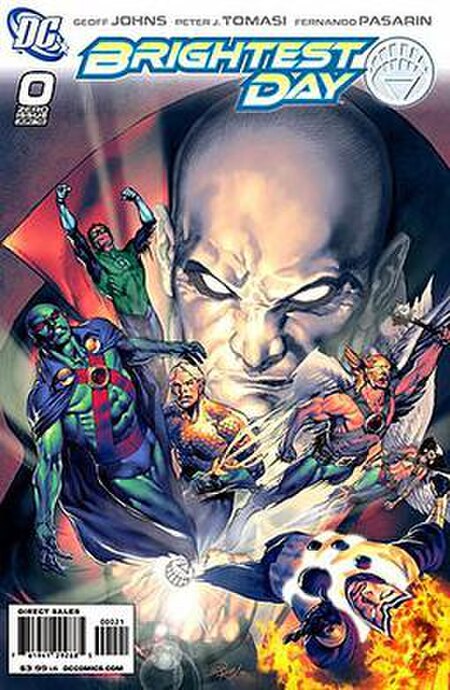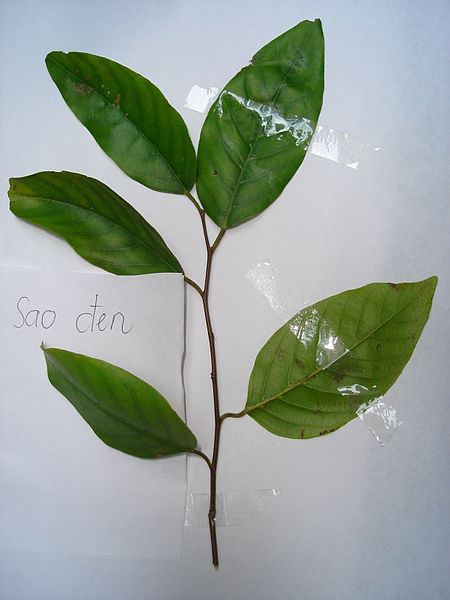Data communication
|
Read other articles:

2013 Indian filmPrema Katha ChitramTheatrical movie posterDirected byJ. Prabhakara ReddyWritten byMaruthi DasariProduced byMaruthi DasariSudarshan ReddyStarring Sudheer Babu Nanditha Praveen Saptagiri CinematographyJ. Prabhakara ReddyEdited byS. B. UddhavMusic byJeevan BabuProductioncompanyMaruthi Media House ProductionsDistributed byMaruthi Media House ProductionsRelease date 7 June 2013 (2013-06-07) [1]Running time130 minutesCountryIndiaLanguageTeluguBudget₹2.5 crore&#…

Historic body of South Indian literature Rashtrakuta Territories (India), 800 CE Rashtrakuta literature (Kannada: ರಾಷ್ಟ್ರಕೂಟ ಸಾಹಿತ್ಯ Rāṣṭrakūṭa Sāhitya) is the body of work created during the rule of the Rastrakutas of Manyakheta, a dynasty that ruled the southern and central parts of the Deccan, India between the 8th and 10th centuries. The period of their rule was an important time in the history of South Indian literature in general and Kannada liter…

ХристианствоБиблия Ветхий Завет Новый Завет Евангелие Десять заповедей Нагорная проповедь Апокрифы Бог, Троица Бог Отец Иисус Христос Святой Дух История христианства Апостолы Хронология христианства Раннее христианство Гностическое христианство Вселенские соборы Ни�…

В статье есть список источников, но не хватает сносок. Без сносок сложно определить, из какого источника взято каждое отдельное утверждение. Вы можете улучшить статью, проставив сноски на источники, подтверждающие информацию. Сведения без сносок могут быть удалены. (8 дека�…

Gouvernorat d'Alep مُحافظة حلب Localisation du gouvernorat d'Alep en Syrie. Administration Pays Syrie Type Gouvernorat Capitale Alep ISO 3166-2 SY-HL Démographie Population 4 868 000 hab. (2011) Densité 263 hab./km2 Langue(s) ArabeTurcKurdeArménienSyriaque Géographie Superficie 18 482 km2 modifier Le gouvernorat d'Alep est l'un des quatorze gouvernorats de Syrie ; il a pour capitale la ville d'Alep. Districts Le gouvernorat est subdivisé en…

2010–11 crossover storyline published by DC Comics Brightest DayVariant cover of Brightest Day 0 (June 2010 DC Comics), art by Ivan ReisPublisherDC ComicsPublication dateMay 2010 – May 2011Genre Superhero Title(s)Brightest Day #0–24 Main character(s)Green LanternReverse-FlashJadeOsirisMaxwell LordHawkmanHawkgirlAquamanMartian ManhunterFirestormCaptain BoomerangDeadmanHank HallAnti-MonitorBlack MantaSirenCreative teamWriter(s)Geoff JohnsPeter TomasiPenciller(s)S…

Not to be confused with FLEX (operating system). Discontinued modular real-time multiuser multitasking operating system Operating system FlexOSDeveloperDigital ResearchWritten inCWorking stateDiscontinuedSource modelClosed sourceInitial release1986; 38 years ago (1986)Latest release2.33 / May 1998; 26 years ago (1998-05)Latest preview2.34 / 1999; 25 years ago (1999)Marketing targetIndustrial, PoSAvailable inEnglishPlatformsIntel 80186, I…

此条目序言章节没有充分总结全文内容要点。 (2019年3月21日)请考虑扩充序言,清晰概述条目所有重點。请在条目的讨论页讨论此问题。 哈萨克斯坦總統哈薩克總統旗現任Қасым-Жомарт Кемелұлы Тоқаев卡瑟姆若马尔特·托卡耶夫自2019年3月20日在任任期7年首任努尔苏丹·纳扎尔巴耶夫设立1990年4月24日(哈薩克蘇維埃社會主義共和國總統) 哈萨克斯坦 哈萨克斯坦政府與�…

Grand Vizier of the Ottoman Empire from 1757 to 1763 This article is about the Ottoman Grand Vizier. For the Prime Minister of Egypt, see Raghib Pasha. In this Ottoman Turkish style name, the given name is Mehmet Ragıp, the title is Pasha, and there is no family name. Koca DamatMehmet RagıpPashaCoin ussed by Koca Ragıp Pasha as governor of Egypt. Minted in Cairo, dated 1730. Arabic inscriptions on both sides. Obv: Sultan of the two lands and Khaqan of the two seas, the Sultan, Raghib,…

American political commentator (born 1964) Glenn BeckBeck in 2023BornGlenn Lee Beck[1][2] (1964-02-10) February 10, 1964 (age 60)Everett, Washington, U.S.Occupation(s)Talk show host, political commentator, producer[3] entrepreneur[4]Political partyRepublican (before 2014)Independent (2014–present)[5]MovementConservatismSpouses Claire (m. 1983; div. 1994) Tania (m. 1999)̴…

British politician (born 1976) The subject of this article is standing for re-election to the House of Commons of the United Kingdom on 4 July, and has not been an incumbent MP since Parliament was dissolved on 30 May. Some parts of this article may be out of date during this period. Please feel free to improve this article (but note that updates without valid and reliable references will be removed) or discuss changes on the talk page. Leo DochertyMPOfficial portrait, 2020Minister of …

Indian multinational electronics company This article is about the Electronics company. For other companies named Onida, see Onida (disambiguation). MIRC Electronics Ltd.Trade nameOnidaFormerlyMirc Electronics Pvt LtdCompany typePublicTraded as BSE: 500279 NSE: MIRCELECTR ISININE303C01016Industry Consumer electronics Home appliances Founded11 July 1981; 42 years ago (1981-07-11)FounderG.L. MirchandaniHeadquartersMumbai, Maharashtra, IndiaArea servedWorldwideKey people…

Species of tree Hopea odorata Leaves of Hopea odorata Conservation status Vulnerable (IUCN 3.1)[1] Scientific classification Kingdom: Plantae Clade: Tracheophytes Clade: Angiosperms Clade: Eudicots Clade: Rosids Order: Malvales Family: Dipterocarpaceae Genus: Hopea Species: H. odorata Binomial name Hopea odorataRoxb. Synonyms[2] List Hopea vasta Wall. nom. inval. Hopea wightiana Miq. ex Dyer nom. inval. Hopea odorata is a species of tree in the plant family Dipterocarp…

2023 French Polynesian legislative election ← 2018 16 April 2023 (first round)30 April 2023 (second round) 2028 → All 57 seats in the Assembly of French Polynesia29 seats needed for a majorityTurnout60.08% (first round) 1.43pp 69.96% (second round) 3.14pp Party Leader % Seats +/– Tāvini Huiraʻatira Oscar Temaru 44.32 38 +30 Tāpura–ʻĀmuitahiraʻa Édouard Fritch 38.53 16 −33 A here ia Porinetia Nuihau Laurey 17.16 3 New This lists parties that won seats. See the c…

Men's water poloat the Games of the VII OlympiadVenueStade Nautique d'AntwerpDates22–29 AugustCompetitors101 from 12 nationsMedalists Great Britain Great Britain Belgium Belgium Sweden Sweden← 19121924 → Final results for the water polo tournament at the 1920 Summer Olympics.[1] All medals were decided by using the Bergvall system.[2] Squads Main article: Water polo at the 1920 Summer Olympics – Men's team squads Medal summary Go…

British American philosopher and writer (born 1954) Kwame Anthony AppiahFRSLAppiah in 2007Born (1954-05-08) 8 May 1954 (age 70)London, EnglandAlma materClare College, CambridgeSpouseHenry FinderEraContemporary philosophyRegionWestern philosophy African philosophySchoolCosmopolitanismThesisConditions for conditionals (1981)Main interestsProbabilistic semantics, political theory, moral theory, intellectual history, race and identity theory Kwame Akroma-Ampim Kusi Anthony Appiah FRSL…

American political magazine and website This article contains content that is written like an advertisement. Please help improve it by removing promotional content and inappropriate external links, and by adding encyclopedic content written from a neutral point of view. (February 2021) (Learn how and when to remove this message) The ProgressiveOctober 2002 coverActing Managing EditorDavid BoddigerCategoriesPolitics, cultureFrequencyMonthlyPublisherProgressive, Inc.FounderRobert M. La Follette, S…

Graph Theory This article is about relationships in social networks. For the term that encompasses all relationships between individuals in the world or the World Wide Web, see Social network. A drawing of a graph in which each person is represented by a dot called a node and the friendship relationship is represented by a line called an edge This animation shows the different types of relations between social objects. User Eva is a friend of Adam and Kate, though Adam and Kate are not friends t…

Biografi tokoh yang masih hidup ini tidak memiliki referensi atau sumber sehingga isinya tidak dapat dipastikan. Bantu memperbaiki artikel ini dengan menambahkan sumber tepercaya. Materi kontroversial atau trivial yang sumbernya tidak memadai atau tidak bisa dipercaya harus segera dihapus.Cari sumber: Amelia Vega – berita · surat kabar · buku · cendekiawan · JSTOR (Pelajari cara dan kapan saatnya untuk menghapus pesan templat ini) Amelia VegaLahirAmelia V…

لواء الرصيفة - لواء - تقسيم إداري البلد الأردن [1] المحافظة محافظة الزرقاء إحداثيات 32°00′47″N 36°02′56″E / 32.01304°N 36.04878°E / 32.01304; 36.04878 السكان التعداد السكاني 481900 نسمة (إحصاء 2015) • الذكور 257888 • الإناث 224012 • عدد الأسر 94674 الرمز الجغرافي 862…